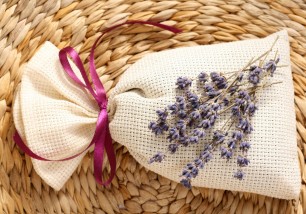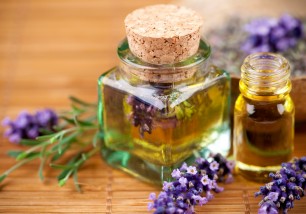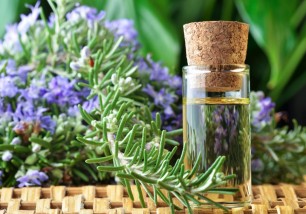LAVENDER
BOTANICAL NAME:Lavandula angustifolia Miller.
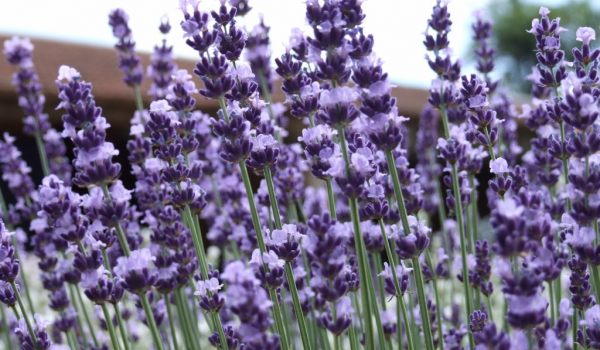
PLANT DATA
| Common Name: | Lavender |
| Botanical Name: | Lavandula angustifolia Miller. |
| Family: | Lamiaceae |
| Origin: | Mediterranean countries, Europe and northern Africa |
| Other names: | ES: Lavandula FR: Lavande varie DE: Lavendel |
Latest tag
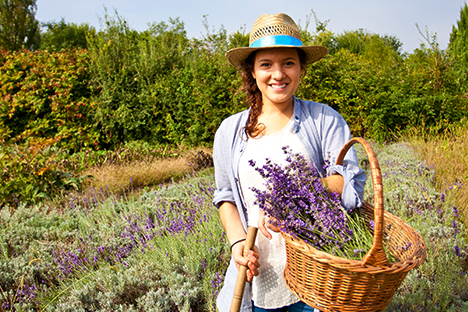

Lavender is a small evergreen shrub with straight branches, and bushy deportment. The lavender leaves, inserted on the stem without petiole, are lanceolate-linear shaped with a green-grey color.
The flowers of the lavender are harvested in ears, principally at the apex of the stalks, but in a few cases, also laterally at the axil of the leaves.
OTHER SPECIES OF LAVENDER:
Three species of the Lavandula genus exist from which it is possible to extract essential oil:
- Lavandula angustifolia Miller, syn. Lavandula officinalis Chaix, Lavandula vera
- Lavandula latifolia DC., syn. Lavandula spica DC
- L. hybrida Rev., natural hybrid of Lavandula officinalis x L. spica
From the Lavandula angustifolia you get the more valuable essence for officinal use.
HISTORY AND CURIOSITY:
For the remarkable characteristics of the smell of the inflorescence, the lavender plant has always had a large, popular use to give a pleasant/enjoyable smell to fresh laundry, so much that the first news on the harvesting techniques go back to the 16th century. The French name lavande, is derived from the verb to wash.
The properties of lavender herbal and popular tradition “the essential oil of lavender proves to be admirably constituent and tonic in cases of weakness, palpitations of nervous origin, dizziness due to weakness, spasms and colic’s…a few drops of lavender oil in a warm foot bath are very efficient in alleviating tiredness. The application of lavender oil externally to relieve sore teeth, neuralgia, scrapes and rheumatism. In the presence of hysteria, paralysis and similar disturbances connected to the weakness and lack of nervous vigor, lavender acts as a strong stimulant.” The essence of lavender is also effective against fleas.
HERBAL TEA CUT
It is the method of extracting lavender from the herbal tradition. The inflorescences of lavender freshly harvested are dried in bunches in a ventilated and shaded environment. Once the material is dried it is threshed causing the detachment of lavender flowers from the stem.
ESSENTIAL OIL
The essence of lavender is obtained by harvesting the inflorescences at the end of the blooming. The content of essential oil in the plant varies from 0,5% to around 2%. The oil is primarily contained inside special oil glands that are located between the groves of the calyx. The extraction of lavender oil principally happens through steam distillation from the fresh flower tops. Sometimes the air-dried inflorescences are treated with a volatile solvent, called benzene, for a complete extraction of the oils. A waxy mass, called “concrete”, is used in some makeups.
TINCTURE
Lavender extraction technique obtained by placing fresh flower tops to macerate in a 65-proof hydro alcoholic solution.
Climate and soil:
Lavender is a rustic officinal plant, which prefers dry, stony, calcareous soils with a good sun exposure.
It does not tolerate water stagnation, so it is necessary to cultivate it on a well-drained soil.
It is particularly resistant to cold (up to 20 °C below zero), so it grows well in mountainous areas.
To obtain a good yield in essential oil, and of a good quality, lavender needs abundant sunlight.
The perfect environment for this cultivation are hilly areas, repaired from cold winds and exposed to the south.
Planting and propagation:
Lavender is a plant that grows spontaneous in the Mediterranean basin, but it is also possible to resort to sowing in nursery with a light soil, rich in sand, adding organic substances to it.
Lavender seedlings need to be prepared in the nursery in February-March or in Autumn, because the seed has a low germination rate and needs to be exposed to low temperatures (2°C for a week).
The transplanting of lavender in the field takes place 60-70 days after first emergence, when the seedlings reach a height of about 10 cm.
By the way, lavender cultivations obtained by seed are highly heterogeneous and give lower yields compared to the ones obtained by cuttings. For this reason the latter are preferred.
The most common technique for lavender is the propagation by cuttings, usually semi-woody, carried out in Autumn or early Spring. The cuttings are taken from 2 or 3 years old mother plants.
The planting is carried out the following Spring, selecting the cuttings which are better developed.
Crop duration:
The cultivation of lavender lasts from 6 to 10 years.
Cultivation care:
Lavender is an undemanding crop. Only in the first year some mechanical weedings in the inter-row are required. The working of the soil must be delicate in order not to damage the root system, which develops on the surface.
The plants do not require particular irrigation, except at the time of planting and, in case of drought, an emergency irrigation in the first year.
Harvesting:
The flowering time for lavender depends on the species and goes from Spring to Summer.
The efficacious parts consists of the flowering tops, which are collected with the whole stem, under dry climate conditions, as they are found to be richer in aromatic substances.
The first harvest is carried out during the second year of the cultivation. The techniques used for the harvesting are:
- manually: in small plots or for spontaneous species
- mechanized: using mowing-loading or mowing-bounding machines.
The yield increases during the first 5-6 years from the planting, reaching a maximum of 50-70 kg/100 m2, and then decreases in the following years.
The best harvesting time, for distillation, is the late flowering, when the bees don’t visit the plants very much. The content in essential oil and its composition remains unchanged even when the flowers are withered.
The product intended for distillation must be as leaf-free as possible, as they give the essential oil a sour, unwanted aroma.
The yield in lavender flowering tops, in the period of maximum production, is of 5-7 tons/hectare.
For herbal use the harvesting is carried out at the beginning of the flowering. The harvest should be kept away from light and humidity.
The yield in dried flowers, for herbal use, is about 1-1.5 t/ha.
Part of the plant used:
Flowers
Properties and uses:
For internal use lavender extracts exhibit carminative, antispasmodic, digestive, stomachic and coleretic properties. They also have slightly sedative properties on the central nervous system.
The flowers with their stems, collected in bunches, or husked and put in small bags are used to scent rooms, linen or to repel insects.
In addition, they are used in infusions in the treatment of mood disorders, minor sleep disorders, but also to calm cough, asthma and whooping cough.
Lavender essential oil is considered to be the most therapeutically versatile oil. It is widely used in aromatherapy for the treatment of mild anxiety in adults and children, neuralgia and insomnia.
This essential oil is also part of the formulation of many massage oils and it is used for balneotherapy.
It is also used in perfumery and cosmetology and to flavor many foods, alcoholic beverages and soft drinks.
Lavender also has other properties: the entire plant, but in particular the essential oil, exhibit antiseptic, anti-inflammatory and rubefacient activities.
Lavender based preparations are also used to cleanse wounds and for oropharynx uses, for example for mouthwashes or for oral hygiene.
The alcoholic extract is used for concoctions to treat neuralgic or rheumatic pains and itching.
